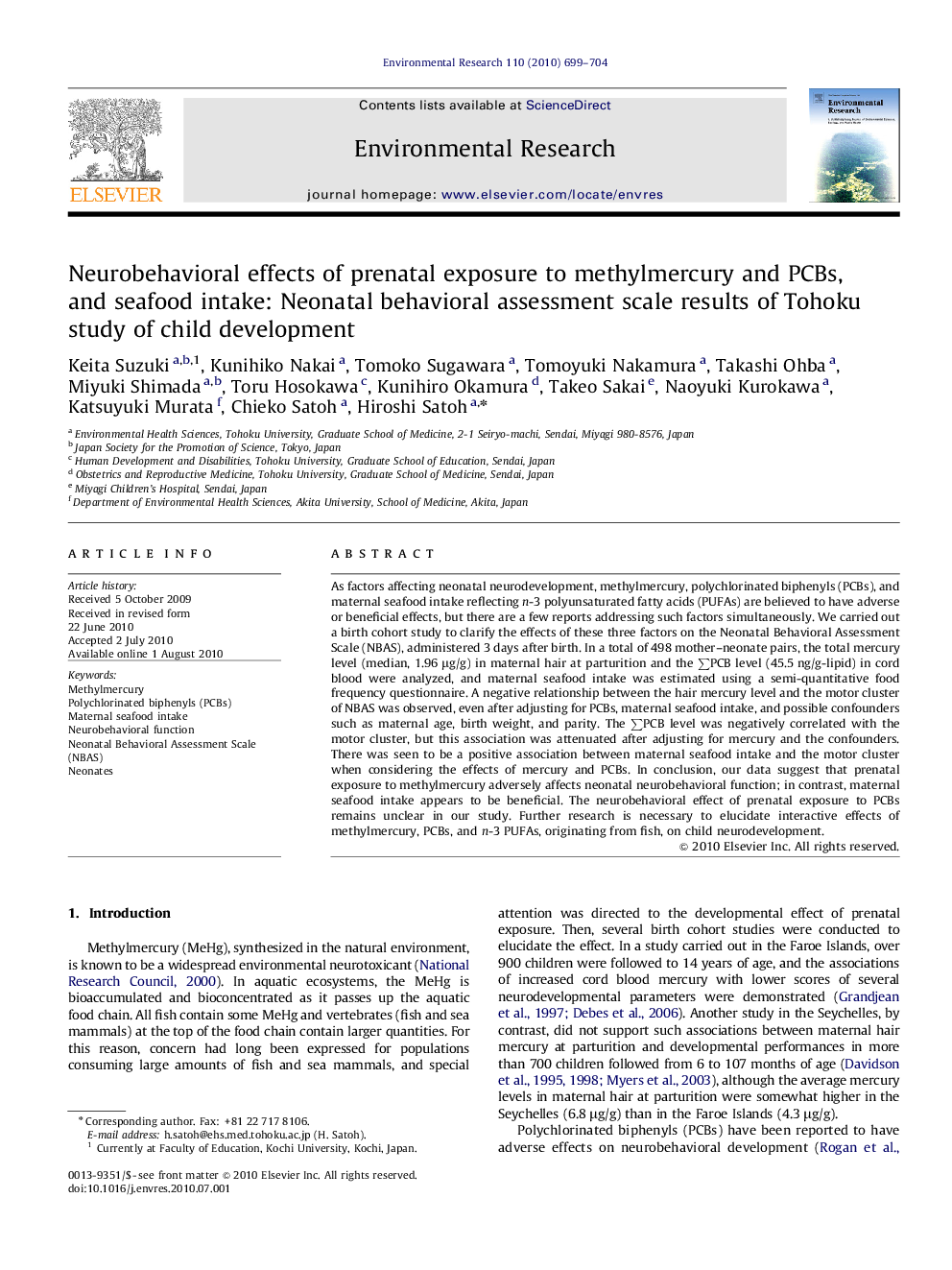| Article ID | Journal | Published Year | Pages | File Type |
|---|---|---|---|---|
| 4470260 | Environmental Research | 2010 | 6 Pages |
As factors affecting neonatal neurodevelopment, methylmercury, polychlorinated biphenyls (PCBs), and maternal seafood intake reflecting n-3 polyunsaturated fatty acids (PUFAs) are believed to have adverse or beneficial effects, but there are a few reports addressing such factors simultaneously. We carried out a birth cohort study to clarify the effects of these three factors on the Neonatal Behavioral Assessment Scale (NBAS), administered 3 days after birth. In a total of 498 mother–neonate pairs, the total mercury level (median, 1.96 μg/g) in maternal hair at parturition and the ∑PCB level (45.5 ng/g-lipid) in cord blood were analyzed, and maternal seafood intake was estimated using a semi-quantitative food frequency questionnaire. A negative relationship between the hair mercury level and the motor cluster of NBAS was observed, even after adjusting for PCBs, maternal seafood intake, and possible confounders such as maternal age, birth weight, and parity. The ∑PCB level was negatively correlated with the motor cluster, but this association was attenuated after adjusting for mercury and the confounders. There was seen to be a positive association between maternal seafood intake and the motor cluster when considering the effects of mercury and PCBs. In conclusion, our data suggest that prenatal exposure to methylmercury adversely affects neonatal neurobehavioral function; in contrast, maternal seafood intake appears to be beneficial. The neurobehavioral effect of prenatal exposure to PCBs remains unclear in our study. Further research is necessary to elucidate interactive effects of methylmercury, PCBs, and n-3 PUFAs, originating from fish, on child neurodevelopment.
